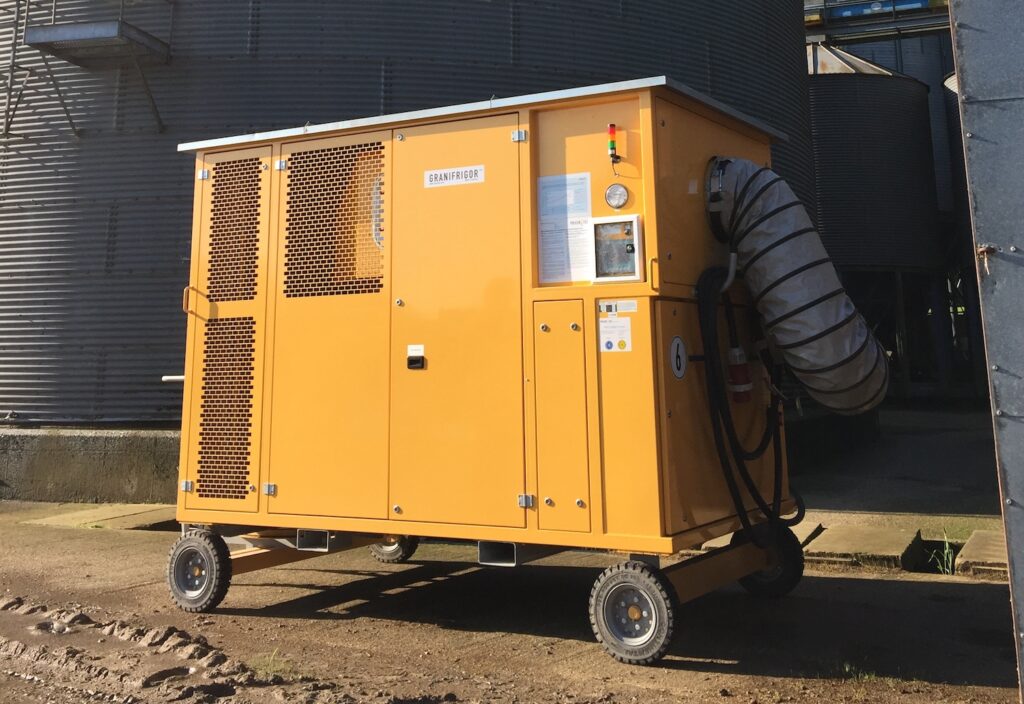Keeping grain cool in extreme temperatures
21st July 2022
The importance of grain cooling often plays second fiddle to grain drying. Not this year, says John McArthur, managing director of McArthur Agriculture, a specialist engineering firm which designs, installs and maintains grain processing and storage systems.
This week has seen combines halted by extreme temperatures. Below 6% oilseed rape is too dry and it cannot be crushed so is having to stay in the field. Barley is reported to be overheating in storage despite being bone dry on intake and temperatures in the heap are building quickly.
It is rare that we have to consider measures to re-introduce moisture to crops or contend with runaway overheating in stores. However, it seems likely that extreme weather conditions are set to become the norm and arable farmers need to be prepared.
There are some practical measures that can be taken to manage hot, dry grain in the store to keep combines moving.
Safe storage of grain is dependent on moisture and temperature, and the AHDB has a handy safe storage time calculator. This tool will tell you how many days a crop may be stored at a given moisture and temperature while remaining safe from risks such as mould, germination, insects and mites.
While the heatwave continues, controlling grain temperature is key. Low volume ventilation equipment such as BDC Systems Ltd’s air stacks, air spears and corraducts in combination with low volume fans, can be an effective measure. Fresh air moving through grain in store will keep temperatures under control.
Alternatively, you can use your grain drier for cooling as West Yorkshire farmer, Andrew Nicol, did recently on discovering that his barley had risen to nearly 35 degrees in the grain store overnight. Mixing and cleaning grain in his Mecmar mobile grain drier while blowing ambient air through it quickly brought the temperature back under control on a cooler morning.
Both these interventions however, rely on ambient air temperature and with recent night time temperatures providing little respite from the heat, they are not always effective.
A dependable solution for keeping grain cool in these conditions is the FrigorTec grain cooler (pictured). Imported by McArthur Agriculture, it uses a refrigeration system to ensure the delivery of cool, dry air at around 10ºC, regardless of weather conditions. Cooling capacities range from 30–1,200 tonnes per day and require an existing air distribution system.
The FrigorTec, despite not being widely adopted in the UK, has a role to play in delivering guaranteed cooling in grain stores, Mr McArthur says. Particularly as the need for more reliable cooling solutions is set to increase as climate change appears to be delivering hotter and drier summers.

